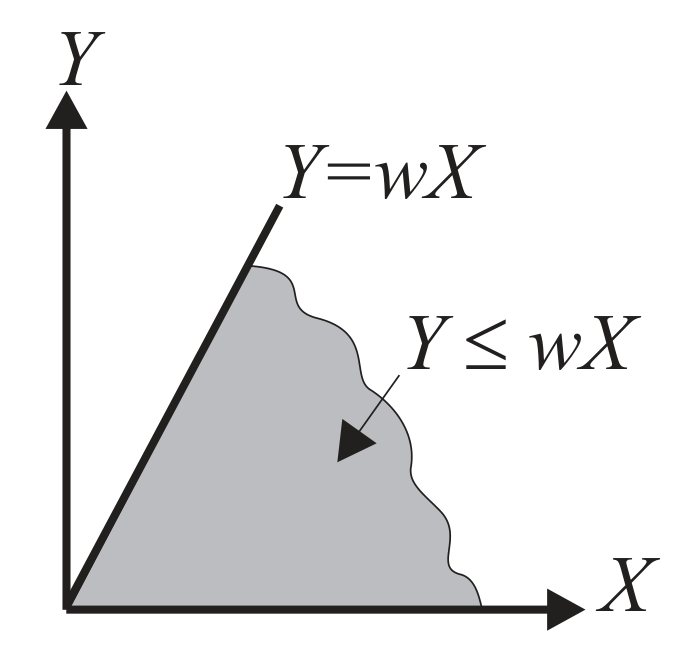Functions on two random variables
PMF of
Suppose the joint PMF of
| 0.2 | 0.2 | |
| 0.35 | 0.1 | |
| 0.05 | 0.1 | |
| Define |
- (a) Find the PMF
. - (b) Find the expectation
.
Max and Min from joint PDF
Suppose the joint PDF of
Find the PDFs:
- (a)
- (b)
Solution (a)
- &&& Compute CDF of
. - Convert to event form:
- Interpret:
- Integrate PDF over the region, assuming
: - Insert PDF formula:
- Convert to event form:
- & Differentiate to find
. :
(b)
- &&& Compute CDF of
. - Convert to event form:
- Consider complement event to interpret:
- Integrate PDF over the region:
- Compute integral:
- Therefore:
- Convert to event form:
- & Differentiate to find
. :
PDF of a quotient
Suppose the joint PDF of
Find the PDF of
- &&& Find the CDF using logic.
- Convert to event form:
- Re-express:
- Diagram:

- Compute:
- Convert to event form:
- & Differentiate to find PDF.
- Compute
:
- Compute
Sums of random variables
Sum of parabolic random variables
Suppose
Let
Find the PDF of
Solution
The graph of
When
Final result is:

Discrete PMF formula for a sum
Prove the discrete formula for the PMF of a sum.
(Apply the general formula for the PMF of
Vandermonde’s identity from the binomial sum rule
Show that this “Vandermonde identity” holds for positive integers
Hint: The binomial sum rule is:
Set
Convolution practice
- Suppose
- Suppose
Find the PDF of
Exp plus Exp equals Erlang
Let us verify this formula by direct calculation:
Solution
Let
Therefore:
This is the Erlang PDF:
Erlang induction step
By direct computation with PDFs and convolution, derive the formula:
Combining normals
Suppose
Solution
Define